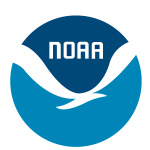- Industrie: Government
- Number of terms: 30456
- Number of blossaries: 0
- Company Profile:
NOAA Coral Reef Conservation Program, National Oceanic and Atmospheric Administration, U.S. Department of Commerce
A computer system for storage, analysis, and retrieval of information in which all data are spatially referenced by their geographic coordinates (latitude, longitude). In addition to primary data, such as climatic and soil characteristics, a GIS can be used to calculate derived values such as erosion hazard, forest yield class, or land suitability for specified land-use types. Data are usually derived from maps, and derived values can be printed out as maps.
Industry:Fishing
A fishery in its very early stage of development, with very low levels of fishing effort, producing much lower quantities of fish than its potential maximum yield.
Industry:Fishing
A fishery for species not directly used for human food, e.g. Atlantic menhaden fishery.
Industry:Fishing
Animals without a backbone. In fishery management terms, refers to shellfish, including lobsters, clams, shrimps, oysters, crabs, and sea urchins.
Industry:Fishing
1. In fisheries models, the factor (q) relates abundance to stock size (x = qN) and fishing mortality to fishing effort (F = qf). Following the latter, (q) is a measure of fishing mortality generated on a stock by one unit of effort; 2. The fraction of a fish stock which is caught by a defined unit of the fishing effort. When the unit is small enough that it catches only a small part of the stock--0. 01 or less-it can be used as an instantaneous rate in computing population change.
Industry:Fishing
1. The amount of biomass produced by the stock (through growth and recruitment) over and above that which is required to maintain the total stock biomass at a constant level between consecutive time periods; 2. Production of new biomass by a fishable stock, plus recruits added to it, less what is removed by natural mortality. This is usually estimated as the catch in a given year plus the increase in stock size (or less the decrease). Also called: natural increase, sustainable yield, and equilibrium catch.
Industry:Fishing
Conflicts between fishing gear on fishing grounds where one type of gear interferes with another type of gear. An example is where mobile trawling gear damages passive gear, such as lobster traps.
Industry:Fishing
A measure of the rate of decline in the numbers of fish caught as individuals become less numerous or available; often calculated from a catch curve.
Industry:Fishing
1. A document prepared under supervision of the appropriate fishery management council (FMC) for management of stocks of fish judged to be in need of management. The plan must generally be formally approved. An FMP includes data, analyses, and management measures. 2. A plan containing conservation and management measures for fishery resources, and other provisions required by the Magnuson-Stevens Act, developed by fishery management councils or the Secretary of Commerce.
Industry:Fishing
A scientific assessment issued by the National Marine Fisheries Service (NMFS) or U. S. Fish and Wildlife Service (USFWS), as required by the Endangered Species Act (ESA) for listed species. Determines the likelihood of an action to jeopardize the existence of a species listed under the ESA.
Industry:Fishing
